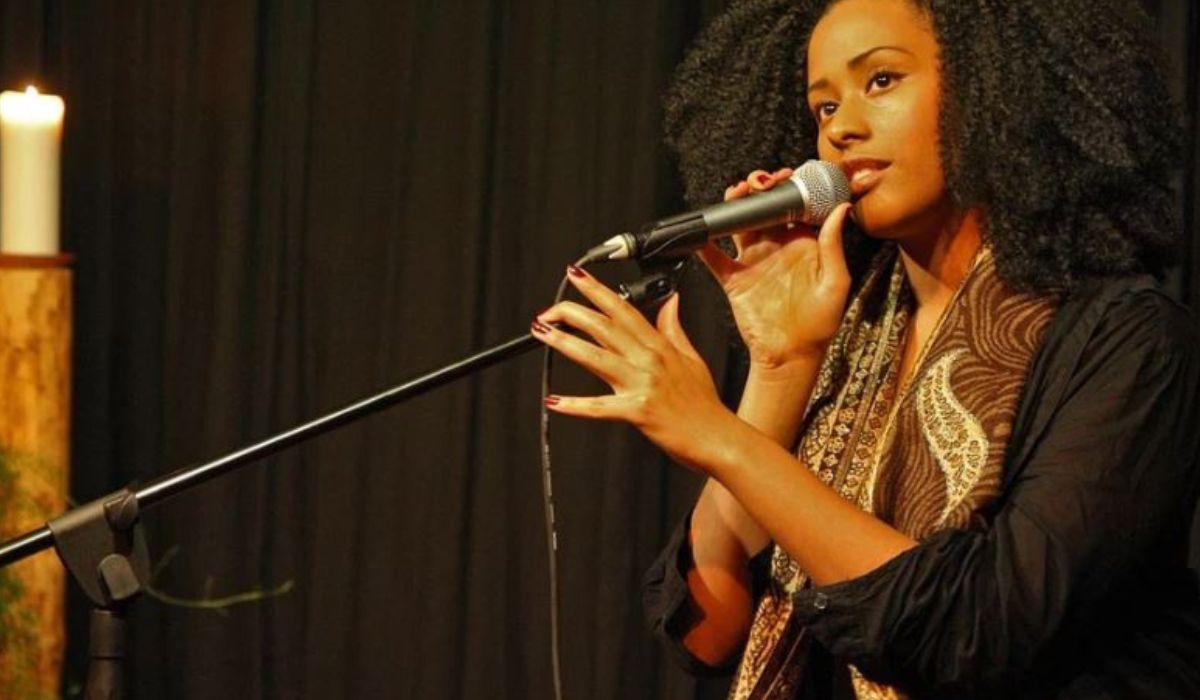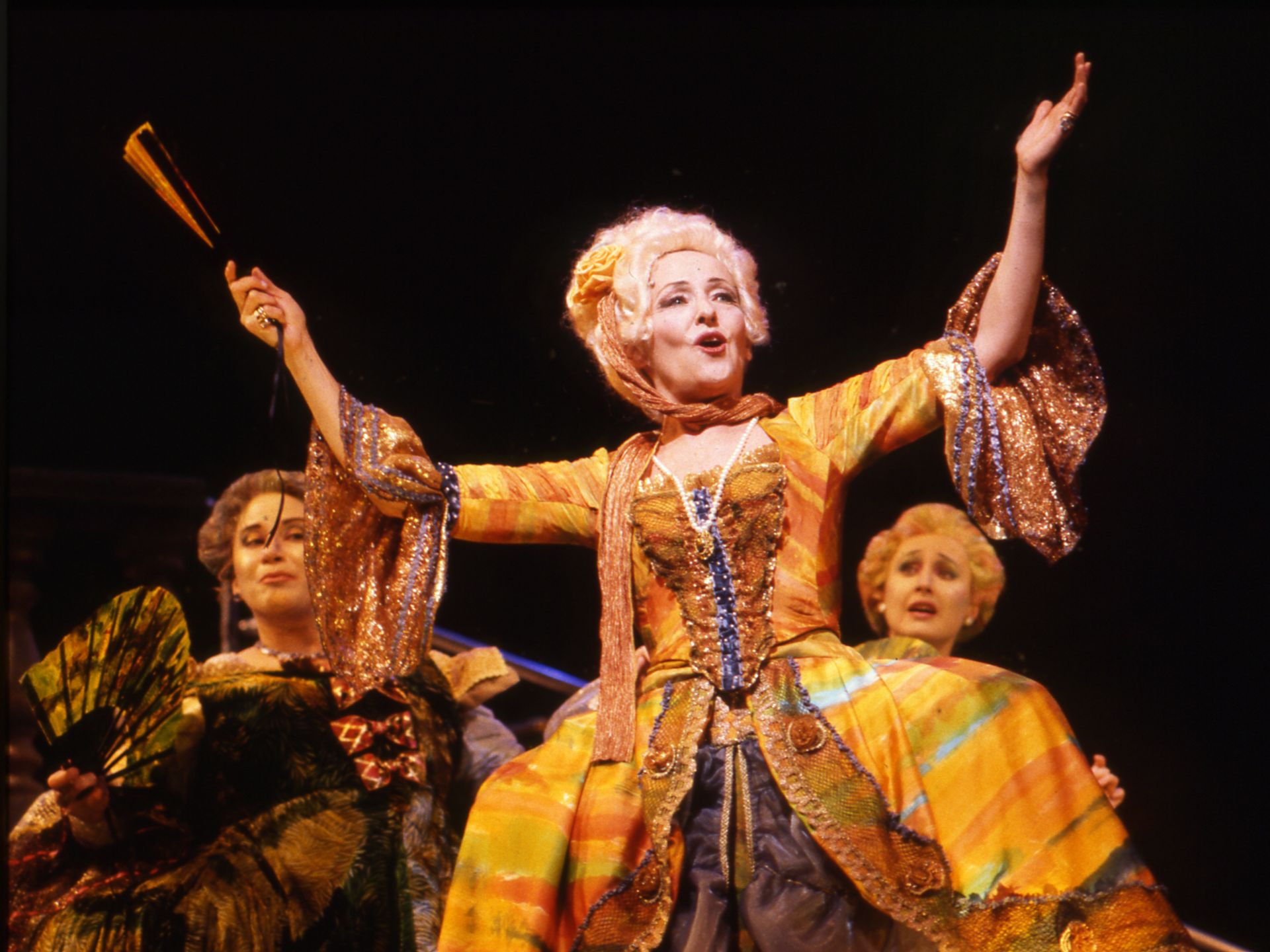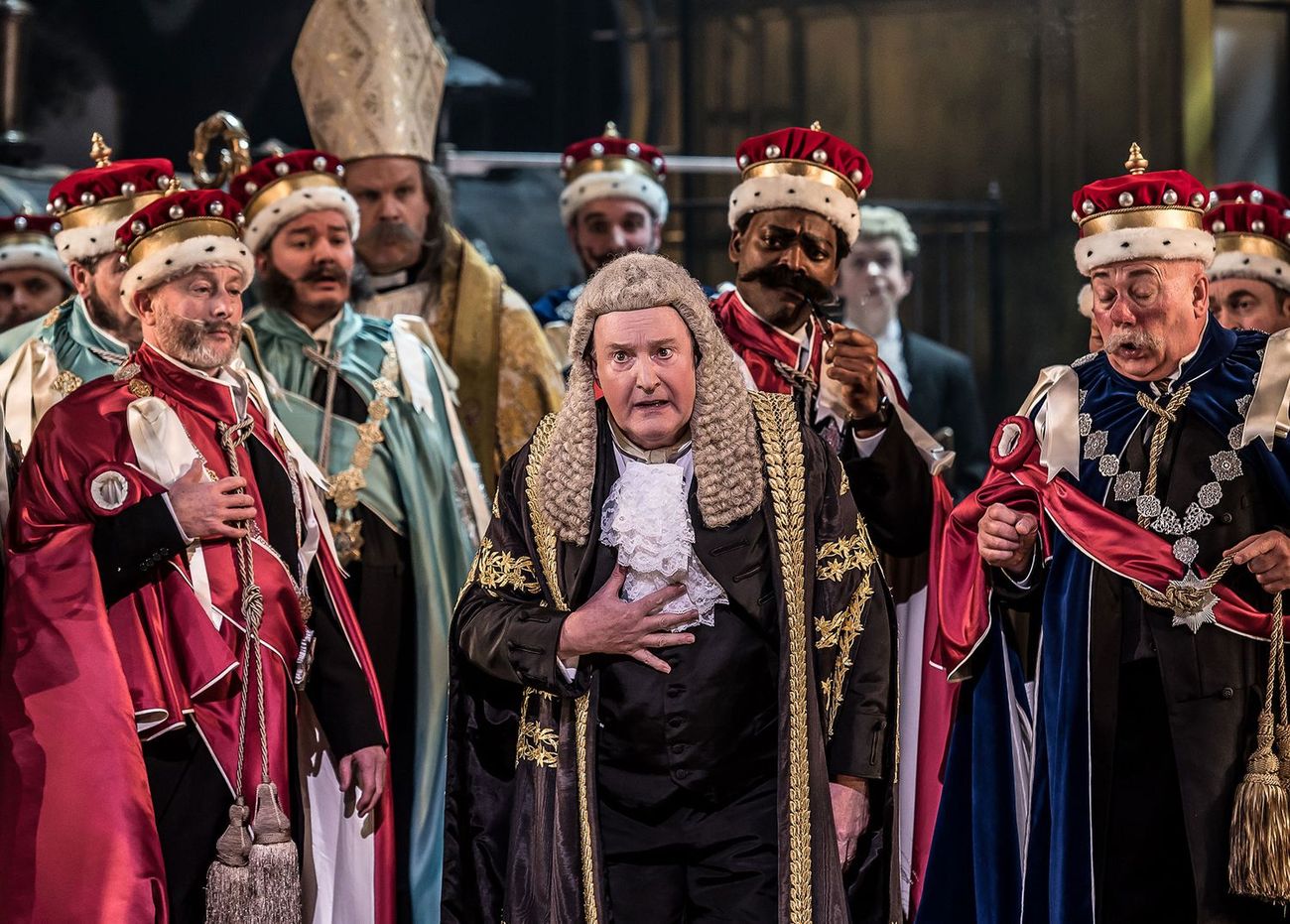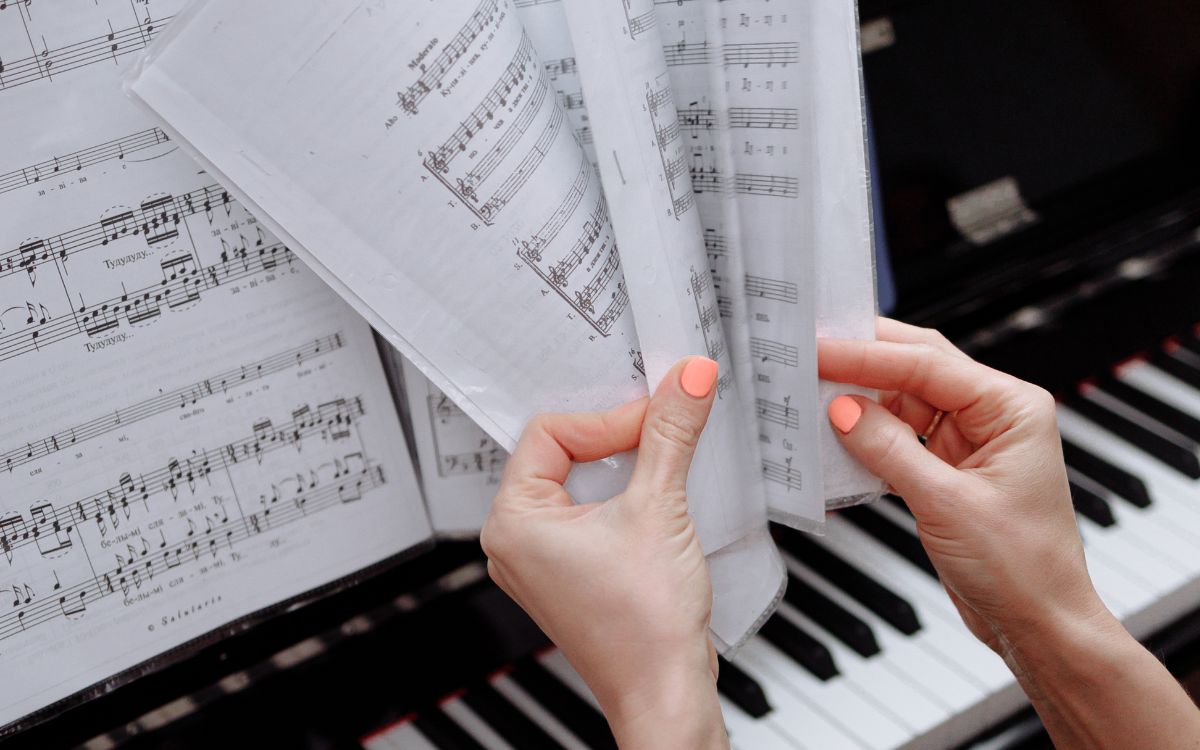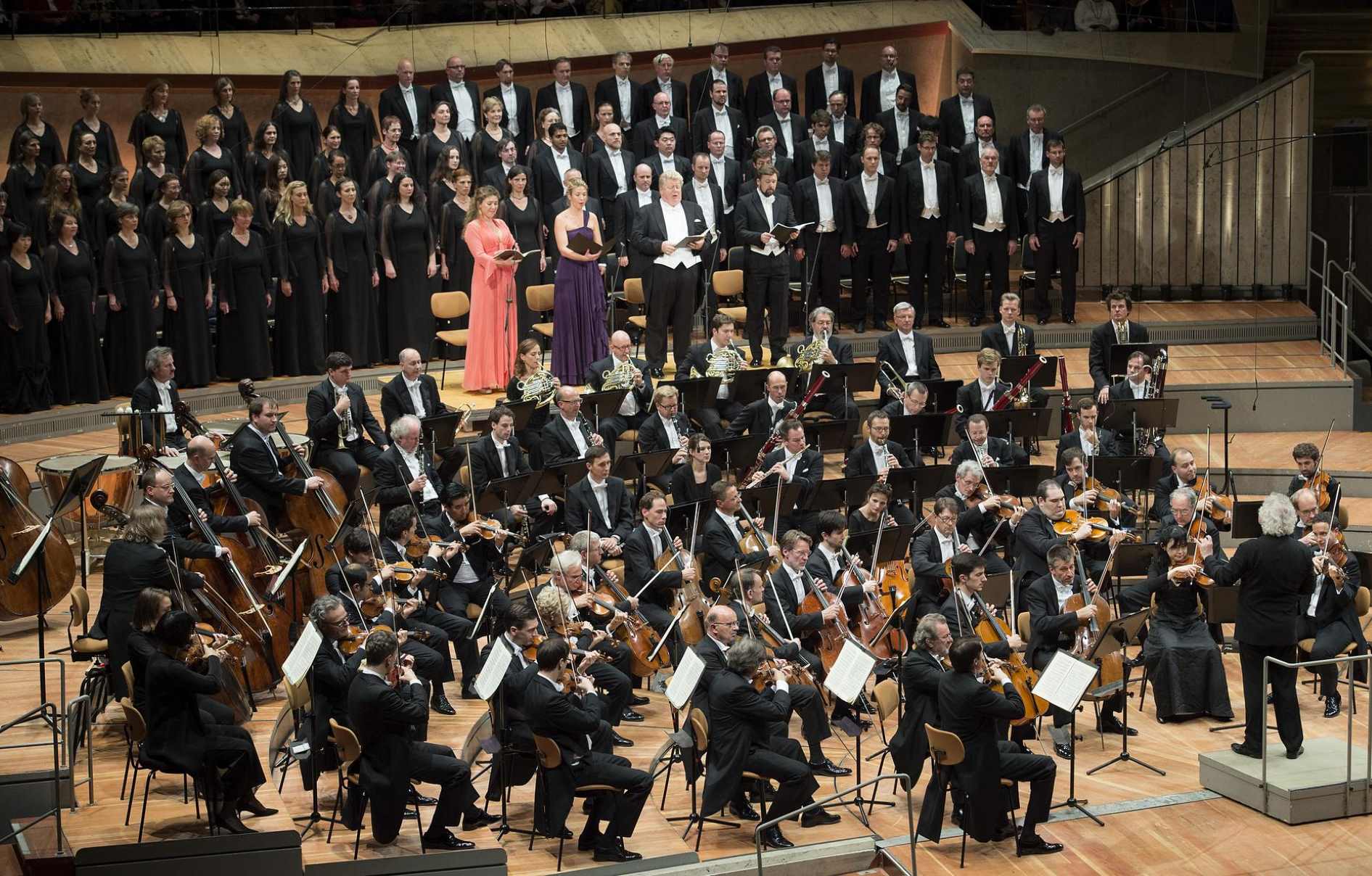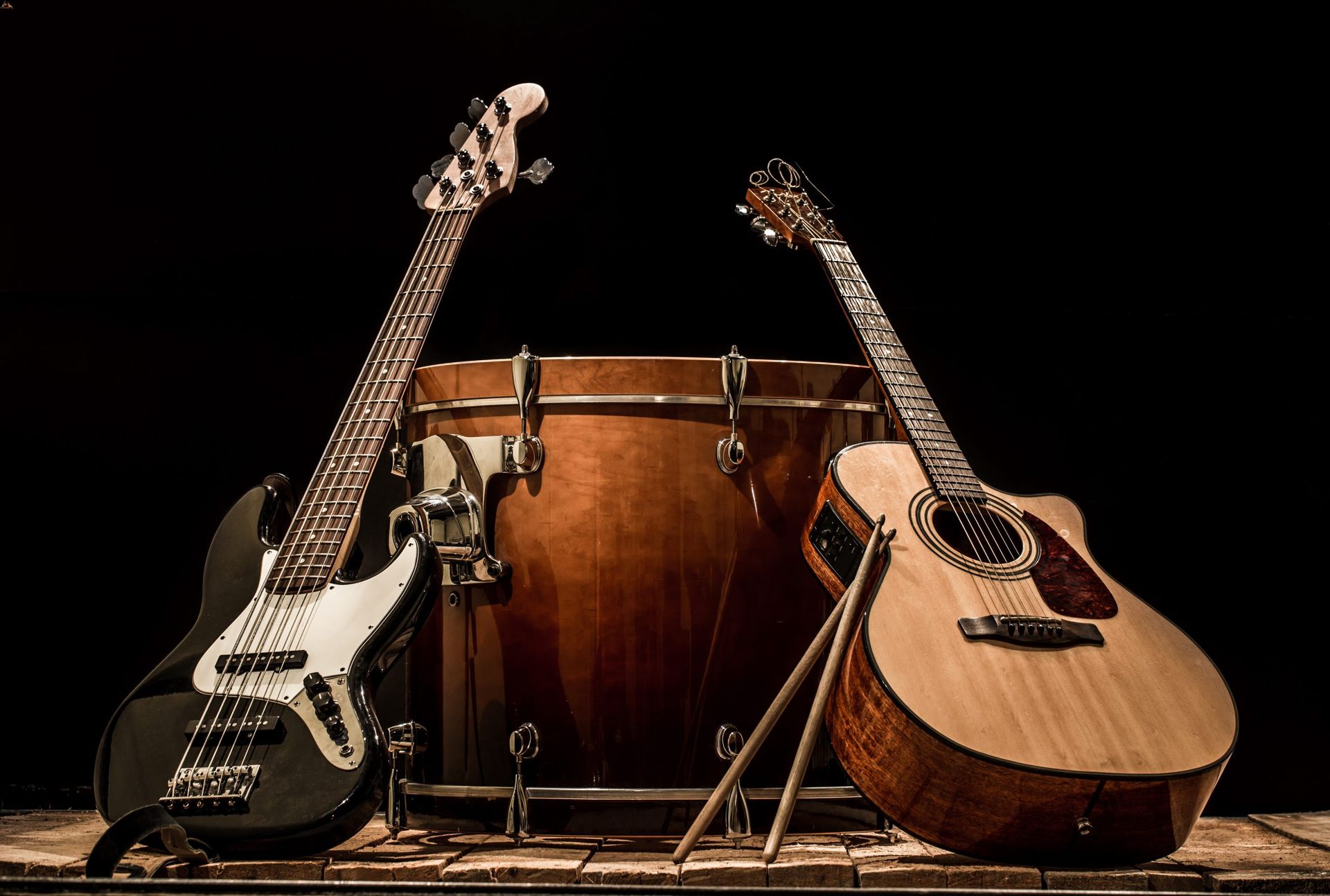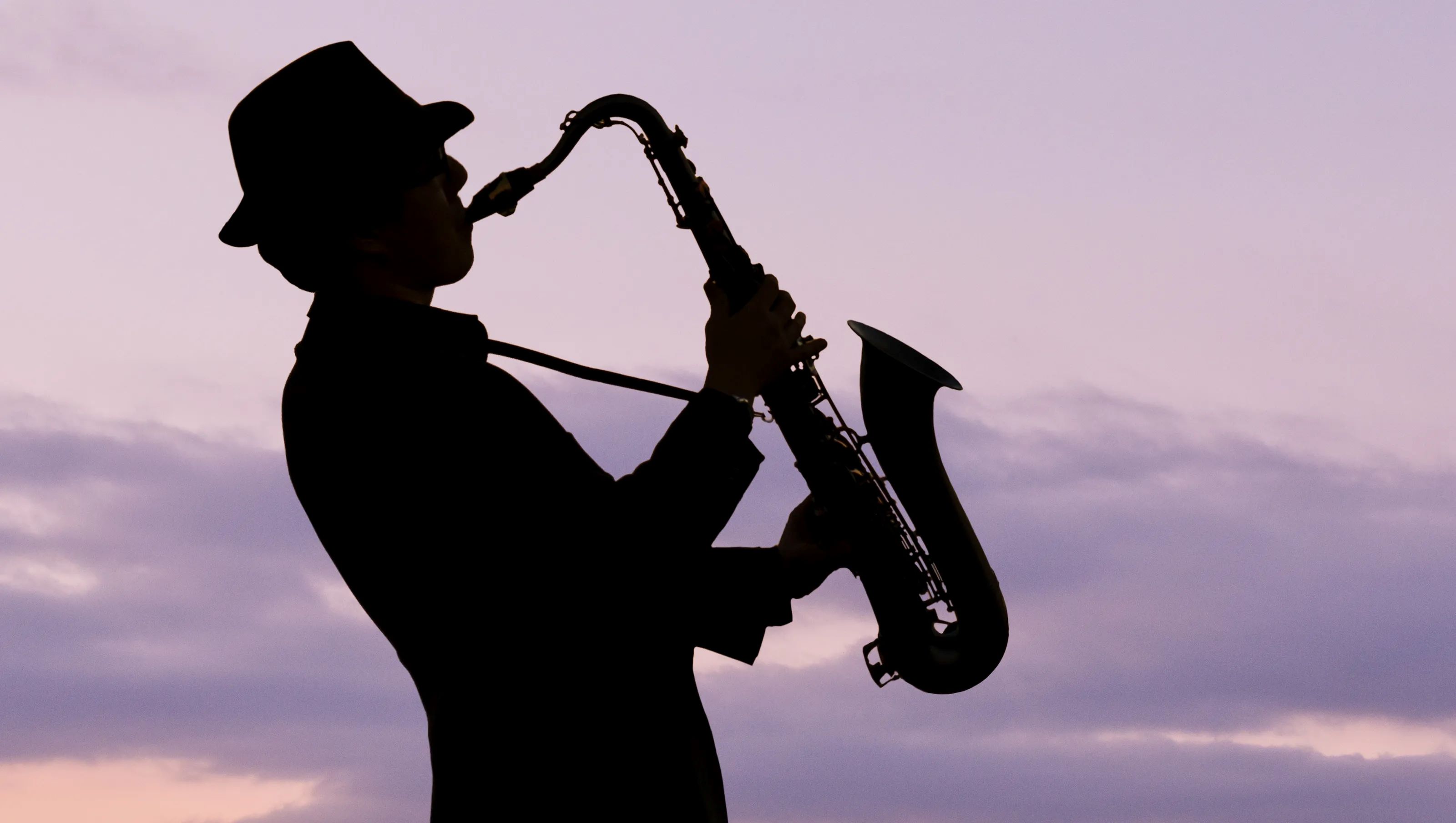Home>Genres>Hip Hop>What Is The Difference Between Pop And Hip Hop


Hip Hop
What Is The Difference Between Pop And Hip Hop
Modified: January 22, 2024
Discover the key distinctions between pop and hip hop music genres. Gain insight into their unique characteristics and explore the influence of hip hop on contemporary culture.
(Many of the links in this article redirect to a specific reviewed product. Your purchase of these products through affiliate links helps to generate commission for AudioLover.com, at no extra cost. Learn more)
Table of Contents
Introduction
Hip Hop and Pop are two of the most popular genres of music in the world today. Each genre has its own unique characteristics, origins, and cultural impacts. While both appeal to a wide audience, the difference between the two lies in the musical styles, lyrics, and overall cultural influence.
Pop music, short for popular music, is a genre that encompasses a wide range of commercial, mainstream music. It is characterized by catchy melodies, simple song structures, and often focuses on themes of love, relationships, and personal experiences. Pop music is known for its accessibility and appeal to a broad audience.
Hip Hop, on the other hand, is a genre that originated in African-American and Afro-Caribbean communities in the 1970s. It is characterized by its rhythmic beats, sampled music, and spoken lyrics or rap. Hip Hop has its roots in the urban cultural movements of New York City and was originally a form of self-expression for marginalized communities.
Over the years, both Hip Hop and Pop have evolved and cross-influenced each other, leading to the emergence of Pop-infused Hip Hop and Hip Hop-influenced Pop music. However, there are still distinct differences between the two genres that set them apart.
In this article, we will explore the differences between Pop and Hip Hop, including their origin and evolution, musical characteristics, themes and lyrics, dance styles and performance, cultural impact, collaboration, and cross-genre influence. By understanding these aspects, we can gain a deeper appreciation for the richness and diversity of both genres and their impact on contemporary music and culture.
Pop Music
Pop music is a genre that has dominated the mainstream music charts for decades. It is known for its catchy melodies, polished production, and broad appeal to a wide range of listeners. Pop music is often characterized by its emphasis on hooks, repetitive choruses, and easy-to-sing-along lyrics.
The origins of pop music can be traced back to the early 20th century, with artists like Frank Sinatra and Bing Crosby popularizing the genre through their crooning style. However, it was in the 1950s and 1960s that pop music really took off with the rise of artists such as Elvis Presley, The Beatles, and Motown acts. These artists introduced elements of rock and soul into the pop genre, creating a fusion that appealed to a broad audience.
In the 1980s, pop music reached new heights with the emergence of iconic artists like Michael Jackson and Madonna, who pushed the boundaries of the genre and incorporated elements of dance and electronic music. This decade saw the rise of synthesizers and drum machines, allowing for more experimentation in production and sound.
Today, pop music continues to evolve and adapt to the ever-changing music landscape. It incorporates elements from various genres, such as R&B, hip hop, EDM, and rock, to create a diverse and eclectic sound. Artists like Taylor Swift, Ariana Grande, and Justin Bieber have dominated the pop charts in recent years, blending catchy melodies with relatable lyrics.
One of the key characteristics of pop music is its focus on universal themes of love, relationships, and personal experiences. Pop songs often tell stories of romance, heartbreak, and self-discovery, resonating with listeners on an emotional level. The lyrics are typically straightforward and relatable, making it easy for listeners to connect with the music on a personal level.
In terms of performance, pop music is often associated with elaborately staged live shows, energetic dance routines, and visually stunning music videos. Artists place a strong emphasis on their image and brand, carefully crafting their public persona to appeal to a wide audience.
While pop music may sometimes be criticized for its commercial nature and lack of artistic depth, there is no denying its cultural impact and ability to bring people together through its catchy melodies and relatable lyrics. Pop music has the power to uplift, inspire, and provide a soundtrack to our lives.
Hip Hop Music
Hip Hop music is a genre that originated in the late 1970s in African-American and Afro-Caribbean communities in New York City. It is characterized by its rhythmic beats, spoken lyrics or rap, and a focus on social and cultural commentary. Hip Hop emerged as a form of expression for marginalized communities to address issues such as racism, inequality, and life in the inner-city.
The origins of Hip Hop can be traced back to block parties in the Bronx, where DJs would mix and scratch records to create seamless beats for people to dance to. These DJs, such as Kool Herc and Grandmaster Flash, laid the foundation for what would become the backbone of Hip Hop – the beat.
In addition to the beats, Hip Hop is known for its spoken word style of lyrical delivery, often called rap. Rappers use rhyme, rhythm, and wordplay to tell stories, express emotions, and convey social messages. The content of Hip Hop lyrics can range from personal experiences to social and political commentary, making it a powerful form of self-expression and storytelling.
Over the years, Hip Hop has evolved and diversified, giving rise to sub-genres such as gangsta rap, conscious rap, trap, and mumble rap. Each sub-genre has its own distinct characteristics and lyrical themes, reflecting the experiences and perspectives of different artists.
However, at its core, Hip Hop remains a genre that promotes creativity, authenticity, and individuality. It provides a platform for artists to express their thoughts and experiences in a raw and unfiltered manner, often shedding light on the realities of life in urban communities.
Aside from the music itself, Hip Hop culture encompasses other elements such as graffiti art, breakdancing, and fashion. These elements are interconnected and serve as outlets for self-expression within Hip Hop communities.
In terms of its cultural impact, Hip Hop has played a significant role in amplifying marginalized voices and addressing social issues. It has provided a platform for artists to speak out against racism, police brutality, and socioeconomic inequality. Hip Hop has also been a driving force in shaping and influencing popular culture, from fashion trends to language and slang.
Today, Hip Hop continues to thrive, influencing a wide range of music genres and styles. Artists like Jay-Z, Kendrick Lamar, and Cardi B have garnered critical acclaim and achieved mainstream success, further solidifying Hip Hop’s position as one of the most influential and powerful genres in contemporary music.
Origin and Evolution
The origins of Pop and Hip Hop music can be traced back to different cultural movements and communities. Pop music emerged as a commercial genre in the early 20th century, influenced by various genres such as rock, soul, and electronic music. Hip Hop, on the other hand, originated in African-American and Afro-Caribbean communities in the 1970s as a form of self-expression.
Pop music has its roots in the crooning style of artists like Frank Sinatra and Bing Crosby in the 1930s and 1940s. It gained further popularity in the 1950s and 1960s with the rise of rock and roll and Motown acts. The 1980s marked a golden era for Pop music, with the emergence of artists like Michael Jackson and Madonna, who incorporated elements of dance and electronic music into their sound.
Hip Hop, on the other hand, originated in the Bronx, New York City in the late 1970s. It emerged as a cultural movement and a form of expression for African-American and Afro-Caribbean communities who faced social and economic challenges. DJs like Kool Herc and Grandmaster Flash pioneered the practice of mixing and scratching records to create beats at block parties, laying the foundation for Hip Hop music.
The 1980s and 1990s saw the rise of Hip Hop as a global phenomenon, with artists like Run-D.M.C., Public Enemy, and Tupac Shakur becoming cultural icons. Hip Hop continued to evolve, giving rise to sub-genres such as gangsta rap, conscious rap, and alternative Hip Hop.
In the late 1990s and early 2000s, Pop and Hip Hop began to intersect, giving rise to a new sound known as Pop-infused Hip Hop or Hip Hop-infused Pop. Artists like Nelly, Eminem, and Justin Timberlake blurred the lines between the two genres, incorporating elements from both to create chart-topping hits.
In recent years, the lines between Pop and Hip Hop have become even more blurred, with artists like Drake, Post Malone, and Billie Eilish effortlessly blending the two genres. This fusion of styles reflects the evolving nature of music and the increasing openness to experimentation among artists.
Both Pop and Hip Hop continue to evolve and push boundaries, with artists constantly finding new ways to innovate and captivate audiences. The influence of these genres can be seen in various music styles and cultural movements, making them a vital part of the musical landscape.
Musical Characteristics
Pop and Hip Hop have distinct musical characteristics that set them apart from each other. While both genres are known for their catchy melodies and rhythms, there are certain elements that differentiate the two.
In Pop music, the emphasis is often on creating memorable melodies and hooks that linger in the listener’s mind. Pop songs typically have simple song structures, with catchy choruses that are easy to sing along to. The instrumentation in Pop music is often varied, drawing from a wide range of instruments such as guitars, keyboards, and electronic elements. The production tends to be polished and clean, with a focus on creating a sound that is radio-friendly and accessible to a broad audience.
On the other hand, Hip Hop is characterized by its rhythmic beats and sampled music. The beat is the backbone of a Hip Hop song, with DJs and producers carefully selecting and manipulating samples to create a distinctive sound. The use of drum machines, synthesizers, and other electronic elements is common in the production of Hip Hop music.
Rap, a key feature of Hip Hop, involves the rhythmic and poetic delivery of lyrics. Rappers use rhyme, rhythm, and wordplay to tell stories, express emotions, and convey social messages. The delivery of rap can vary widely, ranging from slow and introspective to fast and energetic.
While Pop music often focuses on universal themes of love, relationships, and personal experiences, Hip Hop lyrics delve into a wide range of subjects, including social issues, politics, and personal struggles. Hip Hop has been celebrated for its ability to provide a platform for artists to express their thoughts and experiences, shedding light on topics that may not be widely discussed in mainstream media.
In terms of melody, Pop music generally has a more prominent and melodic vocal line, with hooks that are designed to catch the listener’s attention. Hip Hop, on the other hand, puts a greater emphasis on the rhythm and flow of the lyrics, often featuring repetitive phrases and patterns.
Both Pop and Hip Hop have influenced and been influenced by other genres, leading to the emergence of sub-genres and hybrid styles. This constant evolution and experimentation have contributed to the richness and diversity of contemporary music.
Overall, the musical characteristics of Pop and Hip Hop reflect their different origins, influences, and intended audiences. While Pop music aims to create catchy and accessible melodies, Hip Hop focuses on rhythmic beats and lyrics that address social and cultural issues.
Themes and Lyrics
Pop and Hip Hop music have distinct themes and lyrical styles that reflect their origins and cultural contexts. While both genres tackle a wide range of subjects, there are certain themes that are more commonly associated with each.
In Pop music, the lyrics often revolve around universal themes such as love, relationships, and personal experiences. Pop songs are known for their relatable and emotive lyrics that speak to the human condition. Artists often express feelings of joy, heartbreak, and self-discovery through their songs. The lyrics tend to be straightforward and easy to understand, allowing listeners to connect with the music on a personal level.
In contrast, Hip Hop lyrics delve into various social, political, and cultural issues. The genre emerged as a form of expression for marginalized communities, and the lyrics reflect the lived experiences of artists within those communities. Hip Hop acts as a platform for artists to address topics such as racism, inequality, police brutality, poverty, and life in the inner-city.
Rappers often use their lyrics to tell stories, give social commentary, and share their personal struggles. The lyrical content of Hip Hop can be raw, thought-provoking, and confrontational. It serves as a means to shed light on societal issues and to voice the experiences and perspectives of those who are often underrepresented or marginalized.
However, it is important to note that not all Hip Hop songs focus solely on serious or controversial subjects. Many Hip Hop artists also create songs that celebrate success, express personal aspirations, boast lyrical skills, or simply entertain listeners.
Both Pop and Hip Hop have also been known to incorporate elements of storytelling in their lyrics. Pop songs often recount personal narratives or fictional stories that resonate with listeners. On the other hand, Hip Hop has a strong tradition of storytelling through its lyrics, with rappers drawing on their own experiences or creating vivid narratives to captivate the audience.
Furthermore, Pop and Hip Hop lyrics can both be influenced by cultural trends, societal changes, and the experiences of the artists themselves. They provide a reflection of the times and can serve as commentary on contemporary issues.
Overall, while Pop music tends to focus on universal themes and personal experiences, Hip Hop lyrics delve into social and cultural issues, giving a voice to marginalized communities and providing a platform for social commentary. Both genres showcase the power of music to tell stories, evoke emotions, and connect people through shared experiences.
Dance Styles and Performance
Both Pop and Hip Hop music are closely associated with vibrant and energetic dance styles that are an integral part of their performance. While the dance styles differ between the two genres, they share a common goal of engaging and entertaining audiences.
In Pop music, dance styles often vary depending on the artist and the era. Pop music has seen iconic dance moves and choreography that have become cultural phenomenons. Artists like Michael Jackson, Madonna, and Beyoncé have brought intricate and highly synchronized dance routines to the forefront of Pop music performances.
Pop dance styles incorporate a wide range of influences, including elements of jazz, ballet, hip hop, contemporary, and even traditional ethnic dance. The choreography is often visually appealing, with a focus on precision, fluid movements, and captivating formations. Pop performances aim to create an immersive and visually stunning experience, using dance as a means to captivate audiences and enhance the overall entertainment value.
In contrast, Hip Hop is closely associated with its own dance style known as breakdancing or b-boying/b-girling. Breakdancing originated alongside Hip Hop music in the streets of the Bronx, New York City during the 1970s. It is characterized by acrobatic moves, footwork, spins, and freezes, often performed on the floor or in a dynamic battle format. Breakdancing is rooted in the principles of improvisation, self-expression, and showcasing individual skill and style.
Over the years, Hip Hop dance styles have expanded beyond breakdancing to include other forms of street dance such as popping, locking, and krumping. These styles incorporate elements of funk, jazz, and street culture, and are often performed with an emphasis on rhythm, precision, and personal expression.
Both Pop and Hip Hop performances also incorporate elements of theatricality and showmanship. Pop performances often feature elaborate stage setups, costume changes, and visual effects to create a visually immersive experience for the audience. Artists focus on creating a memorable and engaging stage presence, blending music, dance, and theatrical elements to deliver a captivating performance.
Hip Hop performances, on the other hand, prioritize authenticity and individuality. The energy, charisma, and skill of the performer play a central role in captivating the audience. Hip Hop artists often engage in freestyle dance battles, where they showcase their improvisational skills and compete with each other in a friendly and competitive manner.
Both Pop and Hip Hop performances have a strong focus on audience participation and creating a sense of connection with the crowd. Whether it’s through catchy dance routines or impressive breakdancing moves, the goal is to create an atmosphere of excitement and togetherness.
Overall, dance styles and performance play a significant role in both Pop and Hip Hop music, enhancing the overall entertainment value and allowing artists to connect with their audience on a deeper level. While Pop emphasizes choreographed routines and showmanship, Hip Hop showcases individual skill and self-expression through its diverse range of street dance styles.
Cultural Impact
Pop and Hip Hop music have had profound cultural impacts, shaping not only the music industry but also influencing fashion, language, and societal norms.
Pop music has always been at the forefront of popular culture, with its widespread appeal reaching audiences around the world. Pop artists have the power to shape trends and influence fashion choices through their music videos, performances, and personal styles. Iconic Pop artists like Madonna, Michael Jackson, and Lady Gaga have left a lasting impact on fashion, pushing boundaries and setting new trends.
Moreover, Pop music has the ability to transcend borders and language barriers, bringing people together through a shared love for catchy melodies and relatable lyrics. Pop songs often become anthems for different generations, leaving a lasting cultural imprint through their ability to evoke nostalgia and represent specific eras.
Hip Hop, with its roots in marginalized communities, has had a significant cultural impact, especially in giving a voice to underrepresented communities and addressing social issues. Hip Hop has been instrumental in providing a platform for artists to express their experiences and shed light on themes such as racism, inequality, and urban life.
Additionally, Hip Hop has played a crucial role in the empowerment and elevation of Black culture. From its fashion to its language and slang, Hip Hop has influenced mainstream culture. It has shaped trends in fashion, with artists like Run DMC popularizing Adidas tracksuits and artists like Jay-Z and Kanye West launching their own clothing lines.
Furthermore, Hip Hop has influenced language and vocabulary, introducing new slang and expressions into everyday conversation. It has also given rise to diverse subcultures within Hip Hop, with graffiti art and street fashion becoming integral components of the culture. These elements have not only influenced the visual arts but have also shaped the way people express themselves and their identities.
Both Pop and Hip Hop have also contributed to breaking down barriers and challenging social norms. Pop music has been a vehicle for empowerment and self-acceptance, promoting messages of inclusivity and celebrating individuality. Artists like Lady Gaga and Troye Sivan have used their platforms to advocate for LGBTQ+ rights and to promote messages of love and acceptance.
Hip Hop, with its focus on personal storytelling and social commentary, has sparked important conversations about social issues and brought awareness to topics such as racism, police brutality, and socioeconomic disparities. Artists like Kendrick Lamar and J. Cole have been vocal advocates for social justice, using their music to inspire change and provoke thought.
Overall, both Pop and Hip Hop music have had immense cultural impacts, influencing fashion, language, societal norms, and social justice movements. They have shaped popular culture, transcended boundaries, and provided platforms for artists to express themselves and address important issues. Their influence continues to shape the world of music and the broader cultural landscape.
Collaboration and Cross-genre Influence
Collaboration and cross-genre influence are key aspects of the music industry, and both Pop and Hip Hop have played a significant role in bridging gaps between different genres and creating unique musical collaborations.
Pop music has a long history of collaborating with artists from various genres, showcasing its versatility and willingness to experiment. Collaborations between Pop artists and artists from different genres have resulted in chart-topping hits and helped to introduce new sounds and styles to mainstream audiences.
Over the years, numerous Pop artists have collaborated with Hip Hop artists, leading to the rise of Pop-infused Hip Hop or Hip Hop-infused Pop tracks. The blending of styles and genres has resulted in innovative and groundbreaking songs that appeal to a wide range of listeners.
These collaborations have not only expanded each genre’s fan base but also blurred the boundaries and preconceived notions of what each genre represents. Pop artists such as Ariana Grande, Ed Sheeran, and Justin Timberlake have successfully collaborated with Hip Hop artists like Nicki Minaj, Eminem, and Jay-Z, respectively.
On the other hand, Hip Hop has also had a significant influence on Pop music through collaborations. Hip Hop artists have brought their unique styles and lyrical flows to Pop songs, infusing them with a fresh energy and urban flair. These collaborations have helped to popularize Hip Hop elements and elevate the genre’s presence in the mainstream music scene.
Furthermore, cross-genre collaborations have not been limited to Pop and Hip Hop alone. The influence of these genres can be seen in collaborations with artists from rock, country, electronic, and other genres. This cross-pollination has allowed for the creation of new and exciting sounds that transcend traditional genre boundaries.
Collaborations and cross-genre influence have also played a significant role in introducing emerging artists to larger audiences. By teaming up with established artists from different genres, up-and-coming musicians are given the opportunity to showcase their talents to a wider fan base, thereby gaining recognition and expanding their own musical horizons.
These collaborations highlight the power of music to bring artists together, push creative boundaries, and foster a sense of unity among diverse fan bases. They demonstrate that music knows no boundaries and can create a shared experience for listeners across different genres and backgrounds.
Overall, collaborations and cross-genre influence have become integral to the music industry, allowing for the exploration and blending of different styles and sounds. Through these collaborations, Pop and Hip Hop artists have helped shape the musical landscape, bridging gaps between genres, and creating innovative and memorable tracks that resonate with audiences worldwide.
Pop vs Hip Hop: A Comparison
Pop and Hip Hop are two distinct genres with their own unique characteristics, origins, and cultural impacts. While both appeal to a wide audience, there are notable differences between the two that set them apart.
Musically, Pop music is known for its catchy melodies, simple song structures, and emphasis on hooks. It often incorporates a wide range of instruments, and the production tends to be polished and clean. In contrast, Hip Hop is characterized by its rhythmic beats, spoken lyrics or rap, and use of sampled music. Hip Hop beats are often created through the manipulation of drum machines, synthesizers, and other electronic elements.
Lyrically, Pop music often focuses on universal themes of love, relationships, and personal experiences. The lyrics are straightforward and relatable, allowing listeners to connect with the music on a personal level. Hip Hop, on the other hand, delves into a wide range of subjects, addressing social, political, and cultural issues. Hip Hop lyrics can be raw, thought-provoking, and confrontational, providing a platform for artists to voice their experiences and shed light on societal concerns.
Dance styles and performances also differ between the two genres. Pop music performances often feature elaborate choreography, visually stunning visuals, and a focus on showmanship. Artists strive to create visually captivating experiences, engaging the audience through precision and choreographed routines. In contrast, Hip Hop performances showcase individual skill and style, often incorporating street dance styles like breakdancing, popping, and locking. The emphasis is on personal expression, improvisation, and showcasing one’s own unique talent.
Culturally, both genres have had significant impacts. Pop music has been at the forefront of popular culture, influencing fashion trends, language, and societal norms. Pop artists have the ability to shape trends and create anthems for different generations. Hip Hop, on the other hand, has been influential in providing a voice for marginalized communities and addressing social issues. It has also played a role in shaping fashion, language, and street culture, while advocating for social justice.
Collaboration and cross-genre influence are evident in both Pop and Hip Hop, with artists exploring new sounds and styles through collaborations with artists from different genres. Pop has often collaborated with Hip Hop artists, leading to the rise of Pop-infused Hip Hop tracks, while Hip Hop artists have brought their unique style to Pop songs, infusing them with an urban flair.
Ultimately, the differences between Pop and Hip Hop lie in their musical characteristics, lyrical content, performance styles, and cultural impacts. However, both genres have left a lasting impact on the music industry, shaping popular culture, and captivating audiences around the world.
Conclusion
Pop and Hip Hop are two influential genres that have captivated audiences worldwide. While they may have distinct characteristics and origins, they share a common thread of connecting people through music and shaping popular culture.
Pop music, with its catchy melodies and relatable lyrics, has a wide appeal and has become synonymous with mainstream success. It has the power to create anthems for different generations, influencing fashion trends, and setting the tone for popular culture. Pop music showcases the art of crafting infectious hooks and creating visually captivating performances.
Hip Hop, on the other hand, emerged as a voice for marginalized communities, using rhythmic beats and powerful lyricism to address social issues and shed light on the realities of urban life. It has had a profound cultural impact, challenging norms, shaping fashion and language, and providing a platform for self-expression and social commentary.
While Pop music often focuses on love, relationships, and personal experiences, Hip Hop delves into a wide range of subjects, from social injustice to personal struggles. Both genres have their own unique dance styles, with Pop emphasizing choreography and showmanship, while Hip Hop showcases individual skill and improvisation.
Collaborations between Pop and Hip Hop artists have allowed for the blending of styles and genres, resulting in innovative and groundbreaking tracks that push creative boundaries. These collaborations have expanded fan bases, shattered genre stereotypes, and created memorable musical moments.
In conclusion, Pop and Hip Hop continue to be influential genres that shape the music industry and popular culture. While they have their differences in terms of musical characteristics, lyrical content, and performance styles, they both have the power to inspire, entertain, and connect people from diverse backgrounds. Whether it’s the infectious melodies of Pop or the gripping storytelling of Hip Hop, these genres have enriched the musical landscape and left an indelible mark on society.

